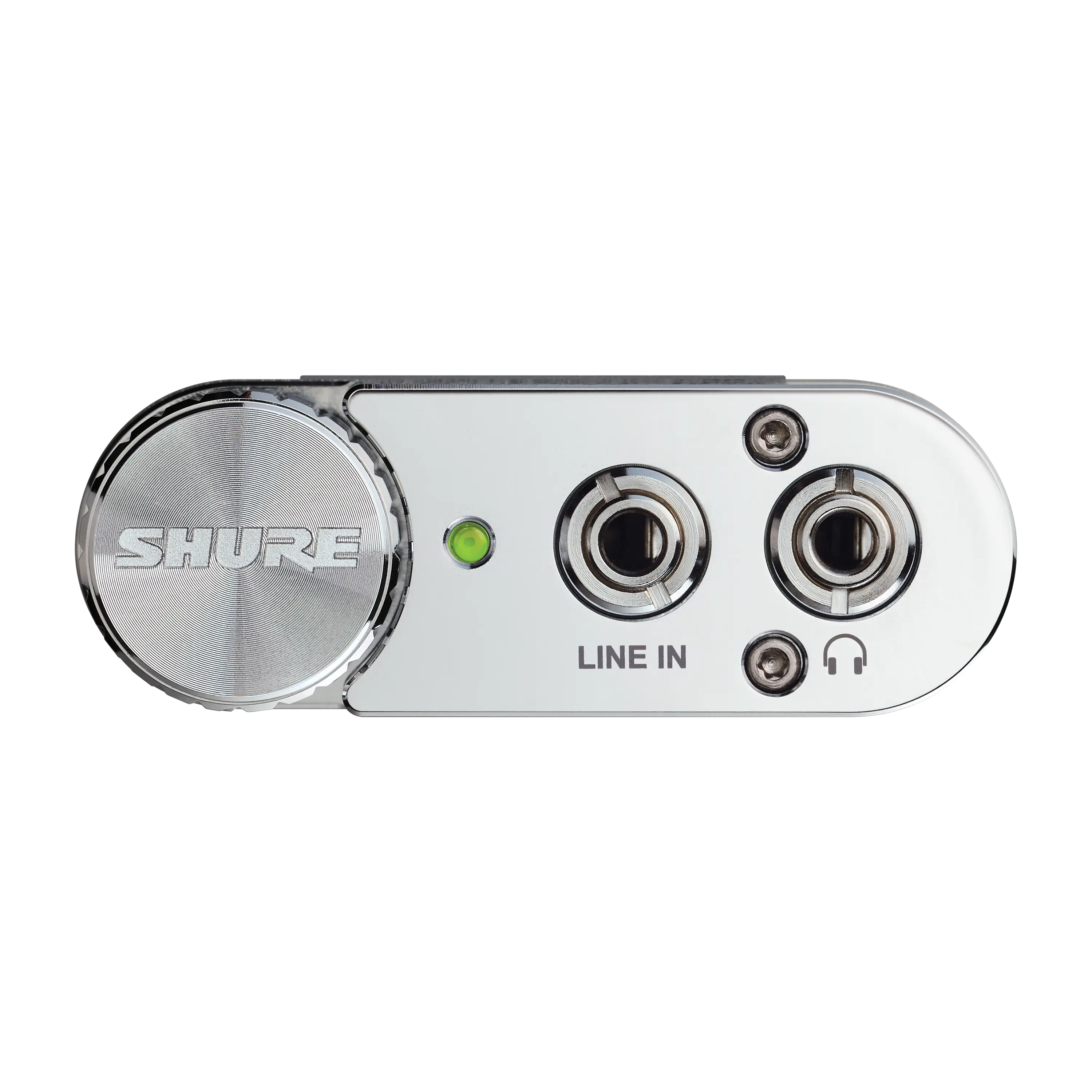A Culture of Innovation

Because it happens so gradually, it's sometimes a shock to notice how much a child has grown. You really see it when comparing school pictures from year to year. The same thing happens when you look at organizations like Shure. Like people, they evolve over time.
Shure strives to be the most trusted audio brand worldwide. How we do that has changed over the years, including how we approach and embrace the important concept of innovation.
While many "firsts" certainly were invented at Shure, our long history of leadership in the audio industry largely has been the result of furthering, applying, and refining existing technologies in innovative ways. Today, we still see leading the industry in pure technological innovation as key to growing the brand. If there's an audio challenge, Shure will try to tackle it — be it proximity effect (KSM8), shrinking RF spectrum (Axient®), or the "impossibility" of electrostatic technology in a small form factor (KSE1500).
Recently, Crain's Chicago Business honored the Shure commitment to technological innovation with an inclusion in its list of Chicago's top patent-winning companies. The Shure Blog team sat down with four of the company's leaders to reflect upon the day-to-day practice of maintaining a culture that fosters ingenuity and progress:
- Christine Schyvinck, President & CEO
- Avinash Vaidya, Executive VP of Product Development & Chief Technology Officer
- Thomas Kundmann, Associate VP of Product Development
- Ahren Hartman, Associate VP of Product Development

We compiled their thoughts below.
Where the Inspiration to Innovate Begins
In order to innovate, according to our panel, you have to look both within and beyond your area of expertise at the same time. Tom Kundmann explains that "engineering team members with broad multidisciplinary backgrounds" have an advantage: They can apply knowledge from one field to another in order to create a solution that wouldn't have been otherwise possible.
And those "aha" moments that make such great water-cooler stories? There's "a lot of iterative, systematic work," also known as "blood, sweat, tears and elbow grease," behind them, Ahren Hartman acknowledges. That seemingly divine inspiration is really the result of applying a solid foundation in math and science to a goal. Professionals in the field provide Ahren with the bulk of his inspiration, which encourages him to commit to all that hard work. And it's by talking to them about evolving versions of products in development that he learns what Shure needs to be focused on to create the next big thing.
Chris Schyvinck and Avi Vaidya both find it beneficial to look at technologies outside the audio industry for ideas that could be applied successfully to the Shure areas of expertise. For example, in his everyday life, Avi notes features in a new car, smartphone or other commonly used devices that could enhance our products. "The inspiration to innovate is all around us," he says. Likewise, Chris looks to market research about "disruptive technologies in other industries" to see what might be transferrable to our own.
Strategies for Fostering Innovation
If you don't welcome disruption, then complacency and inertia take root. Those conditions can be lethal for innovation. Shure leadership finds ways to disrupt the status quo that result in new possibilities for both the business and the product development sides.
In her role at the head of the company, Chris has the mile-high perspective to see where one function could benefit from another point of view. "You need to give people different roles" than they're accustomed to when it's clear that they could jumpstart evolution in a new space, Chris explains, "rather than let people and functions get stuck in a rut." This might mean moving someone with a strategy background into a business lead role, for example.
In the day-to-day management of engineering teams, Tom sees the value in both dreamers and doers, recognizing that each type of engineer plays an important role. He likes to corral "a bunch of broadly knowledgeable engineers to bounce ideas off each other and then get out of their way." He encourages them to connect ideas from different disciplines to create a whole that's more powerful than the sum of its parts. Ahren similarly asks his team members to think beyond their first instinct or solution. He routinely asks, "What if we did it differently? What if X were possible even if it isn't today?" Both agree that rushing to enact the quickest solution that comes to mind can be dangerously shortsighted.
Fostering a culture of innovation also means celebrating in-house ingenuity. There are annual patent ceremonies in Niles, Illinois, and in Suzhou, China, "where we recognize associates for the intellectual property they gain for the company," says Avi, who has several patents himself.
The Role of Failure
When livelihoods are on the line, people are especially careful. They do everything in their power to avoid mistakes. No one wants to put their career at risk because something they did failed. This fear quashes experimentation, which is the key to innovation. In other words, in an innovative company, it has to be okay to fail now and then.
Our panel unanimously acknowledges that failure comes with the territory. As Tom puts it, "you have to have a culture where a fear of failure doesn't drive decisions." Understanding that failure is part of iterative processes, Ahren takes measures to "fail early [in a project] and get the bad ideas off the table early," including "early prototyping, and getting those prototypes in front of customers and marketing colleagues."
While history can inform future decisions about similar products, as Tom points out, "when you're inventing new technology, there isn't always a lot of history to learn from." Still, he stresses the importance of due diligence, and of having a sound grasp of the math and science involved. Due diligence also has a place in the notebook Avi carries everywhere: A list of past wireless product launch issues that he consults regularly when considering future launches. His goal: never make the same mistake twice.
In addition to history, there are other checks and balances designed to mitigate the possibility of spending time and resources on a doomed project. Ahren recommends working in teams "to discourage the temptation to go down a rabbit hole of inquiry alone." Tom draws a similar line: "if what we're exploring doesn't solve a customer problem or need, then that's where it ends. Cool, clever technology for its own sake isn't what we do."
Sometimes, you have to find out what doesn't work in order to learn what does. The realization that something is a dead end is still valuable. Sometimes only further experimentation and time will reveal whether an idea is a true failure or simply a setback on the road to success. When trouble arises, "a kind of bat signal goes up, and team boundaries dissolve," Ahren explains. "If you ask, 'Who knows anything about this that can help fix it?' those who can help will say, 'Yeah, sure, I'll help you work on that.' And it's nice."
No Risk, No Reward
That expression gets thrown around a lot in conversations about innovation and entrepreneurship. But how do you know when you're taking a worthwhile risk? How can you tell the difference between a project-ending failure and a setback that can be overcome?
Intuition. You have to trust the teams who know the math and science well enough to have a hunch that if we try X, Y, or Z, it just might work. In addition, a clear mission is necessary. The development of both the KSM8 Dualdyne™ Vocal Microphone and the KSE1500 Sound Isolating™ Electrostatic Earphone System, for example, saw their fair share of setbacks. (Read about them here for KSM8 and here for KSE1500.) Chris notes that both project teams had very clear goals that they were passionate enough about achieving to believe they could be realized, even when the setback of the day suggested otherwise. As Tom says, "if a project goes too smoothly, you have to ask yourself if you pushed hard enough."

There's a fair amount of geeking out in that iterative work. When Ahren heard the sound quality of the KSE1500 in an early proof of concept, "it was like nothing [he'd] ever heard before." Same thing with the KSM8: "it was just superior, unmatched sound quality." As Arthur C. Clarke's third law states, "sufficiently advanced technology is indistinguishable from magic." And once Shure engineers and leaders get a taste of that, they're going to pursue it no matter how difficult the path ahead.
Another type of innovation our panel takes pride in: Changing conventional wisdom and entrenched market behaviors. Digital wireless technology faced great resistance both internally and externally because "a lot of people thought digital wireless would not have the same pure audio quality that analog did," Chris explains. A dogged determination to overcome this eventually paid off in the form of GLX-D® Digital, QLX-D® Digital and ULX-D® Digital.

Likewise, live performers who swore by fresh batteries for every show required enormous amounts of proof by demonstration and education before they would trust rechargeable batteries. The cost savings and environmental benefits of rechargeability went only halfway: Customers also needed to know that the metering would be accurate and that the battery life would meet their needs. But Shure did it.
Chris imagines that S.N. Shure "would be a pretty happy person" if he were here to see the success of digital wireless and rechargeability, as well as the Dualdyne cartridge and electrostatic earphones. "He would see it as a reinvention of the company," she muses, "because he was always ahead of his time."




